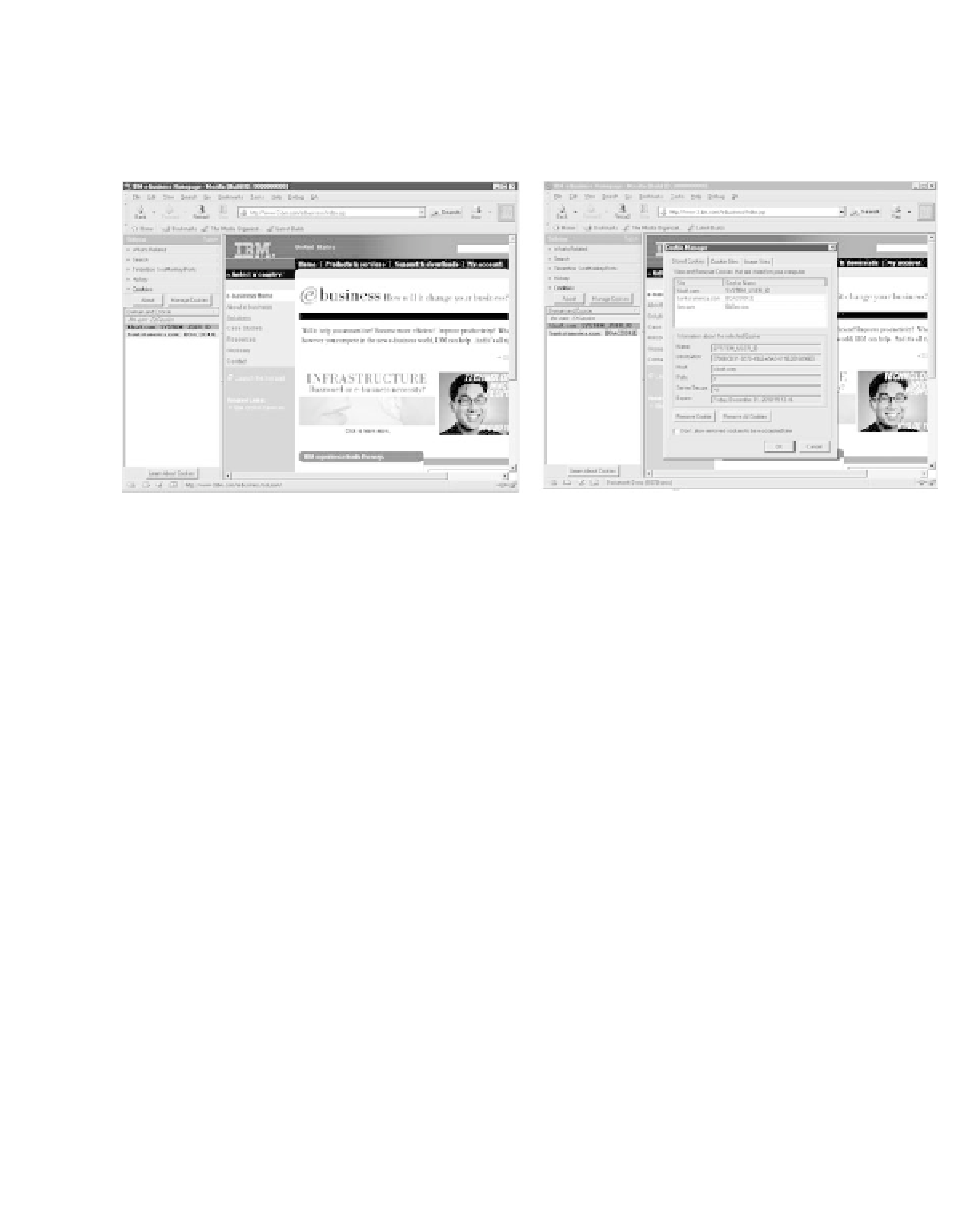Information Technology Reference
In-Depth Information
Figure 16.1.
Screen shot (a) of the Mozilla implementation shows the peripheral awareness
of cookies interface (at the left) in the context of browsing the Web. Each time a
cookie is set, a color-coded entry for that cookie appears in the sidebar. Third-
party cookies are red; others are green. At the user's discretion, he or she can
click on any entry to bring up the Mozilla cookie manager for that cookie. Screen
shot (b) was taken after the user had clicked on an entry to bring up the just-
in-time cookie management tool (in the center) for a particular cookie.
(a) Peripheral awareness mechanism.
(b) Just-in-time cookie management tool.
Twenty seconds later she returns to her writing task at hand, slightly refreshed, and with an idea
taking shape.
What's particularly novel about this workplace scenario is that Janice works in an interior
office. Instead of a real window looking out onto the plaza, Janice has a large-screen video plasma
display that continuously shows the local outdoor scene in real time. Realistic? Beneficial? This
design space is currently being researched by Kahn, Friedman, and their colleagues, using the frame-
work of Value Sensitive Design.
In Kahn et al.'s initial conceptual investigation of this design space, they drew on the psycho-
logical literature that suggests that interaction with real nature can garner physiological and psy-
chological benefits. For example, in one study, Ulrich (1984) found that post-operative recovery
improved when patients were assigned to a room with a view of a natural setting (a small stand of
deciduous trees) versus a view of a brown brick wall. More generally, studies have shown that
even minimal connection with nature—such as looking at a natural landscape—can reduce imme-
diate and long-term stress, reduce sickness of prisoners, and calm patients before and during sur-
gery. (See Beck and Katcher [1996], Kahn [1999], and Ulrich [1993] for reviews.) Thus Kahn
et al. hypothesized that an “augmented window” of nature could render benefits in a work envi-
ronment in terms of the human values of physical health, emotional well-being, and creativity.
To investigate this question in a laboratory context, Kahn et al. are comparing the short-term
benefits of working in an office with a view out the window of a beautiful nature scene versus an
identical view (in real time) shown on a large plasma display that covers the window in the same
office (Figure 16.2a). In this latter condition, they employed a High Definition TV (HDTV) camera
(Figure 16.2b) to capture real-time local images. The control condition involved a blank covering
over the window. Their measures entailed (a) physiological data (heart rate), (b) performance data
(on cognitive and creativity tasks), (c) video data that captured each subject's eye gaze on a

Search WWH ::

Custom Search